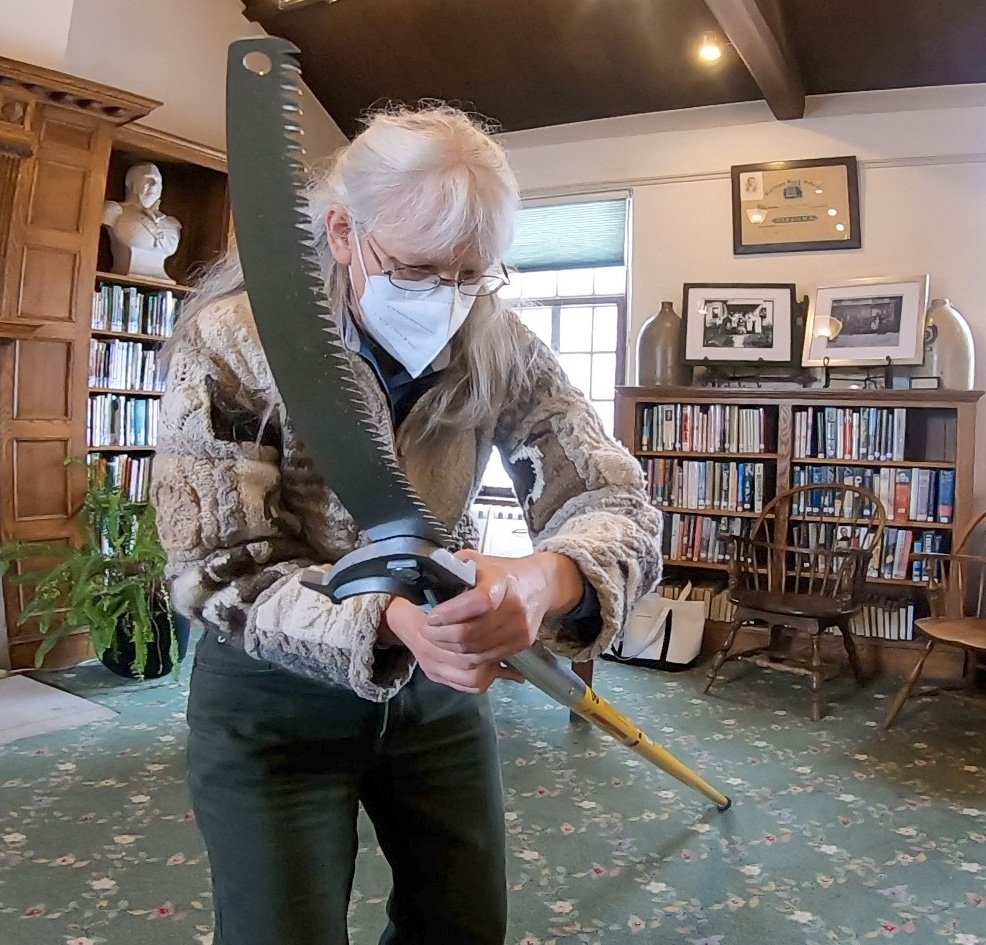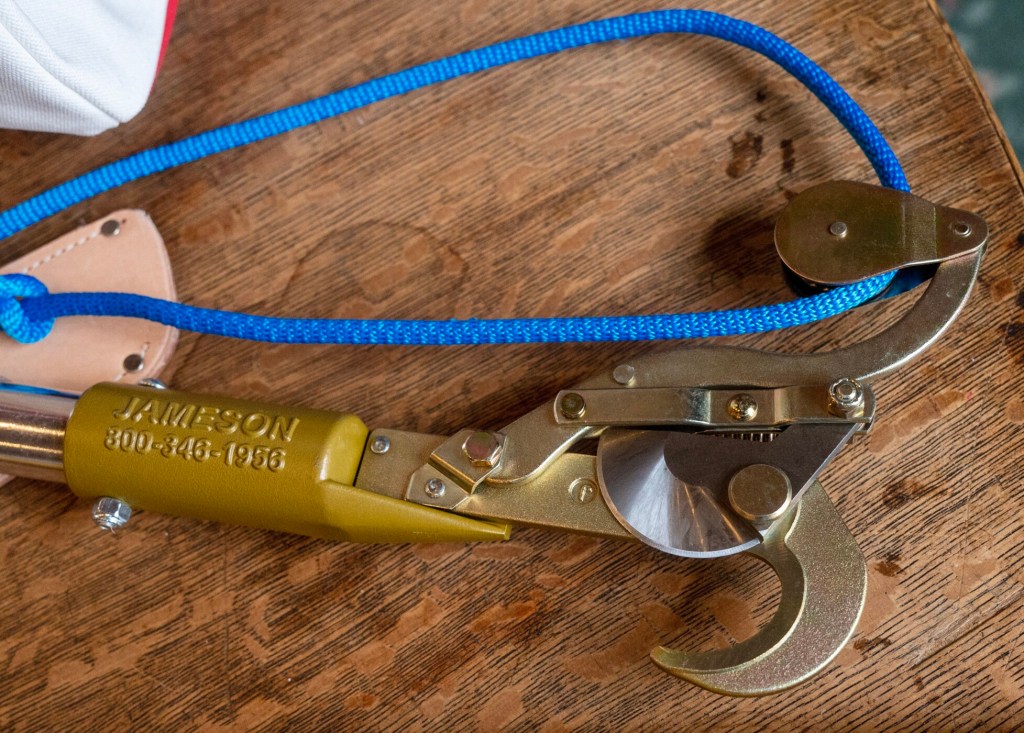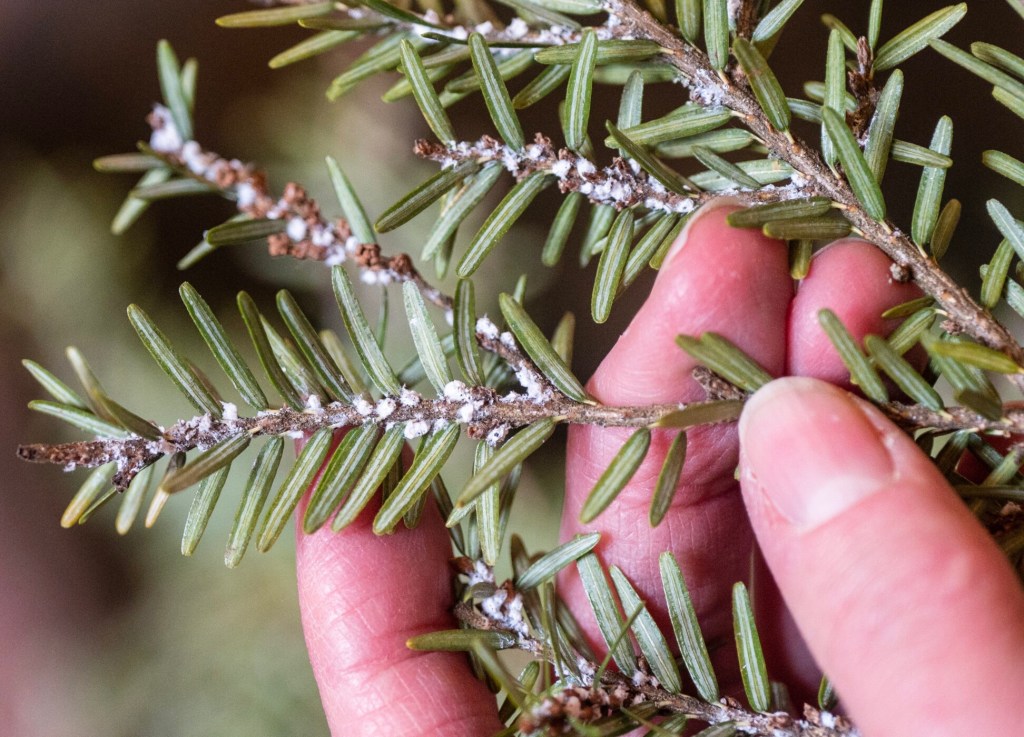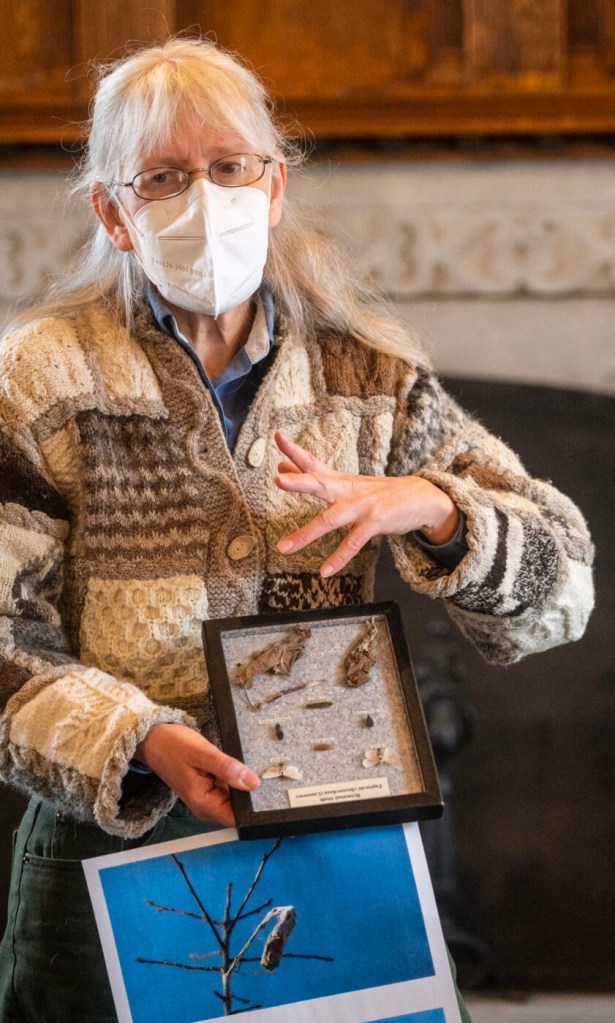GARDINER — Officials say the best time to eliminate browntail moth populations is during the months of February, March and early April. And one library is hoping to equip patrons to do just that.
Maine Forest Service entomologist Colleen Teerling gave a presentation to a small crowd Saturday morning at Gardiner Public Library on how to use a pole saw and pruner to cut browntail moth nests out of trees. Dealing with nests in the winter can help minimize the potential spread of the invasive species in the spring when the caterpillars emerge from their winter webs.
A browntail moth caterpillar’s microscopic hairs can be harmful to humans for up to three years and are very prevalent in the central Maine area. The insect’s hairs cause a reaction similar to poison ivy in humans who are sensitive to the rash. If the hairs are breathed in they can cause trouble breathing for some people, so to curb the problem, Teerling said to cut down the nests on branches of small trees.
She instructed people to use the tool to cut the nest down, which looks silky and is usually at the very tip of a tree branch, then to soak the branch in warm, soapy water for 24 hours before composting or throwing the branch away.
“Neighbors can work together — offer to cut your neighbors!” said Teerling, which is exactly why Sara Maschino and her daughter, Isabelle Jadik, came to the presentation.
They felt that by watching the presentation, they could bring tips back to their neighbors in Gardiner.
“We don’t have any trees, but our neighbor does,” said Maschino. “We are learning what to do.”
Jadik and Maschino moved from Maryland, where they had invasive species to worry about, but not browntail moths. The browntail moths are mainly found in Maine and parts of Cape Cod in Massachusetts.
Teerling explained “how bad” the browntail moth infestation will be on a yearly basis depends on the weather in the fall and spring. In the fall, and especially in Maine where the season has recently been warmer than usual, the browntail moths can feed longer and go into winter healthy enough to survive and come out of the cocoon ready to have more eggs.
Usually, the cold weather spreads a fungus and virus the browntail moths catch, but the warmer temperatures do not allow that to happen.
It’s thought that climate change has played a role in recent years on the surge in the number of moths, but Teerling said there is limited research because of how the invasive population is mostly in Maine and Cape Cod.
“With the warmer weather in the fall, the caterpillars eat up in the fall and go into the winter, robust and healthy, so then they can survive the winter well,” Teerling explained. “Then in the spring, they are bigger and lay more eggs.”
The invasive species is from Europe, but has over time come to infect areas of central Maine, mainly in the Bath and Brunswick area. Teerling said they have seen it as far north as Fort Fairfield and as far south as York, but that for the most part, it’s spreading eastward in Maine, likely from the wind direction.

Colleen Teerling, an entomologist for the Maine Forest Service, talks about browntail moth nests Saturday at the Gardiner Public Library. February is Browntail Moth Awareness Month in Maine. Joe Phelan/Kennebec Journal
Dawn Thistle, the assistant director of the Gardiner Public Library, said Teerling and the library offered the presentation last year, as well. In 2022, February was designated Browntail Moth Awareness Month in Maine. Along with the presentation, they purchased a pole pruner that people could rent out. Thistle said there was a waitlist for the tool.
Since then, the city has helped the library purchase three more pole saw pruners that patrons can rent for up to a week to trim the browntail moth nests from their small trees.
“Last year, when it was looking bad (in Gardiner), Colleen is a patron of our library and she was doing presentations at other locations,” Thistle said. “We thought, ‘We are going to do this,’ and we bought a pole saw, did the talk and demonstration outside and now, it’s February again, Browntail Moth Awareness Month and now (this year) it’s less of a threat.”
Teerling also told the audience about a new invasive species, hemlock woolly adelgid, which was seen for the first time in Gardiner in December. So far, the Maine Forest Service is aware of two locations in the city that the invasive, aphid-like insect can be found. Unlike the browntail moth, the hemlock woolly adelgid is not harmful to humans, but can be damaging to North American hemlock trees.
Teerling advised attendees to take care of the bug in the same way as the browntail moth, by cutting hemlock branches where they are seen. They look like tiny, white woolly masses with a cotton ball-like texture that form on the underside of branches at the base of the needles. They can be found from November until July.
Send questions/comments to the editors.







Success. Please wait for the page to reload. If the page does not reload within 5 seconds, please refresh the page.
Enter your email and password to access comments.
Hi, to comment on stories you must . This profile is in addition to your subscription and website login.
Already have a commenting profile? .
Invalid username/password.
Please check your email to confirm and complete your registration.
Only subscribers are eligible to post comments. Please subscribe or login first for digital access. Here’s why.
Use the form below to reset your password. When you've submitted your account email, we will send an email with a reset code.